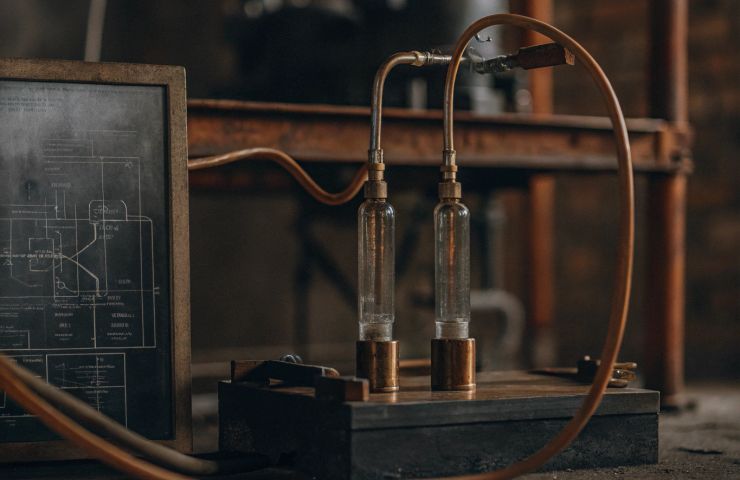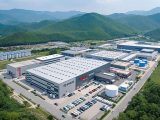
Green Hydrogen Production: Platinum-Doped NiFe MOFs for Efficient Electrolysis
August 5, 2025They say the devil’s in the details … and when it comes to unleashing green hydrogen at scale, every single atom counts. Picture this: steel mills churning out zero emissions, fuel-cell trucks cruising down highways, and wind and solar power neatly ironing out those pesky grid peaks. Sounds like a dream? It’s inching closer to reality thanks to a multinational crew led by Kenzhebatyr Zh. Bekmyrza and Kairat A. Kuterbekov. Their platinum-doped nickel-iron metal-organic framework (Pt-NiFe-MOF) catalyst doesn’t just talk the talk—it delivers serious efficiency, rock-solid durability, and slashes precious-metal usage. That’s a massive leap toward emissions-free energy systems and our 2050 industrial decarbonization targets.
Historical Context
Since the mid-20th century, enthusiasts have touted hydrogen as the holy grail of clean energy. But here’s the kicker: over 95% of today’s hydrogen is “grey,” plucked from natural gas and spewing about 830 million tonnes of CO₂ every year. Shifting to electrolysis powered by wind and solar could flip the script with truly carbon-free hydrogen production. The catch? We’ve been relying on platinum for the hydrogen evolution reaction (HER) and iridium or ruthenium for the oxygen evolution reaction (OER)—and that price tag puts a serious dent in capital costs. Over the past decade, metal-organic frameworks (MOFs) showed promise thanks to their tunable properties, but hurdles like poor conductivity, structural wobbliness, and scaling headaches kept them stuck in the lab. No more—this breakthrough changes the game.
To hit net-zero, we need electrolyzer capacity to skyrocket from roughly 500 MW today to over 300 GW by 2030. That’s a tall order, and cheap, robust catalysts are the key.
Core News
A new paper in Scientific Reports (August 4, 2025) from a consortium spanning Central Asia and Africa—helmed by Kenzhebatyr Zh. Bekmyrza, Kairat A. Kuterbekov, Asset M. Kabyshev, and team—lays out a neat trick: by fine-tuning the atomic mix of Ni, Fe, and Pt in a hierarchical MOF skeleton, they hit a trifecta of wins:
- An overpotential cut of over 100 mV for both HER and OER compared to undoped NiFe MOFs.
- Platinum loading slashed by 15–30× versus commercial Pt/C catalysts.
- Continuous operation for 200 hours with less than 5% drop in activity.
All that while keeping the MOF’s framework strong enough to handle real-world conditions—and unlocking catalytic sites you rarely see in conventional materials.
Technical Dive: Pt-NiFe-MOF Catalysts
So, what makes this Pt-NiFe-MOF tick? Imagine a porous, crystalline web built from organic ligands—think carboxylates or imidazolates—that bridges metal nodes. Nickel and iron play the heavy-lifters as the main catalytic centers, while ultra-low platinum doses (below 2 wt%) fine-tune the electronic environment. The trick is a solvothermal synthesis: careful temperature ramps and solvent tweaks ensure metals spread evenly and pores hit the sweet spot for size.
Here’s how they verified the magic:
- PXRD to check that the MOF’s crystal lattice stood firm after Pt doping.
- BET measurements topping out above 1,200 m²/g, showing plenty of active real estate.
- XPS scans revealing shifts in oxidation states, confirming Pt’s role in tuning Ni/Fe electron density.
- HRTEM images capturing atomically dispersed Pt in the pores—no nasty nanoparticle clumps.
On top of that, DFT simulations mapped the energetics of key intermediates, guiding the experimental tweaks. As Dr. Bekmyrza puts it, “This integrated modeling-experiment approach cut development time and kept us laser-focused on scalable synthesis.”
Integrated Electrolysis System
It’s one thing to shine in half-cell tests; it’s another to talk real devices. The team built a bench-scale membrane electrode assembly (MEA) with Pt-NiFe-MOF sprayed onto carbon paper electrodes—both anode and cathode—separated by a Nafion 117 membrane. Running at 75 °C in a 1 M KOH electrolyte, the setup delivered:
- A steady cell voltage of 1.62 V at 100 mA/cm², beating most commercial alkaline systems (1.8–2.0 V).
- An overall energy efficiency of 75.8%, with Faradaic efficiencies north of 98%.
- Hydrogen purity above 99.9%, confirmed by gas chromatography.
- Over 200 hours of continuous operation with under 5% performance loss—huge compared to typical MOF catalysts that fizzle out in tens of hours.
These benchmarks push Pt-NiFe-MOF electrolyzers right up to industrial targets, proving MOF catalysts can step off the lab bench and into pilot plants.
Why It Matters
Renewable capacity is booming, and green hydrogen is poised to be a versatile energy carrier, long-term storage medium, and a feedstock for making ammonia. Yet, catalyst costs still account for up to half an electrolyzer’s kit price. By cutting Pt usage 15–30× while holding—or even boosting—performance, Pt-NiFe-MOFs pave a clear path to:
- Lowering electrolyzer CAPEX by an estimated 20–30%.
- Slashing long-term OPEX thanks to tougher, longer-lived catalysts.
- Easing precious-metal supply squeezes, smoothing the way for large-scale rollout.
Bottom line: this could push green hydrogen prices toward—or even under—the $2/kg mark often cited as the sweet spot for competitive hydrogen production.
Industry Impact & Outlook
It sounds promising, but real-world adoption hinges on a few moving parts:
- Scaling MOF synthesis: Moving from gram-scale solvothermal batches to continuous-flow reactors or greener, water-based processes.
- OEM partnerships: Teaming up with electrolyzer manufacturers to retrofit pilot units with Pt-NiFe-MOF and field-test performance.
- Policy backing: Tax credits for electrolyzers, carbon pricing, green hydrogen mandates—these will help unlock capital.
- Supply-chain resilience: Finding alternative platinum sources and building recycling loops to keep metals in play.
Keep your eyes peeled for pilot-plant announcements and joint ventures over the next 12–18 months. Competition’s heating up with similar MOF-based concepts popping up across North America, Europe, and Asia. Staying ahead means constant performance gains, scale-friendly manufacturing, and the right policy tailwinds.
Looking Ahead
This isn’t just a single paper; it’s a signpost for how smart materials can reshape the hydrogen economy. Next steps? Ramp up Pt-NiFe-MOF production, slot these catalysts into multi-kilowatt electrolyzer stacks, and run full life-cycle assessments to nail down the environmental wins. If all goes smoothly, we’ll start seeing demo projects at industrial parks and ports, pumping green hydrogen to steel mills, refineries, and trucking corridors.
By replacing grey hydrogen—the culprit behind roughly 830 million tonnes of CO₂ each year—these advanced electrolyzers could rewrite global emissions profiles. Watch how they handle fluctuating renewable inputs and how fast they drive down the levelized cost of hydrogen. When those gears start turning, you’ll know we’ve truly moved into a new era of sustainable energy and industrial decarbonization.
What to watch next: look for announcements of pilot plants, OEM partnerships, and updated cost analyses in the coming year—stay tuned.
Access the full paper here



 With over 15 years of reporting hydrogen news, we are your premier source for the latest updates and insights in hydrogen and renewable energy.
With over 15 years of reporting hydrogen news, we are your premier source for the latest updates and insights in hydrogen and renewable energy.